BY HELEN NICHOLS MURPHY BATTLESON
DNA has become a huge research resource for proving one’s lineage especially in proving blood lines. I have been a genealogist since August 1967, and I began my search on my family tree because my father had been adopted out of his family during WWI at the age of 12 days. I wanted to prove who his parents were, and I had some knowledge.
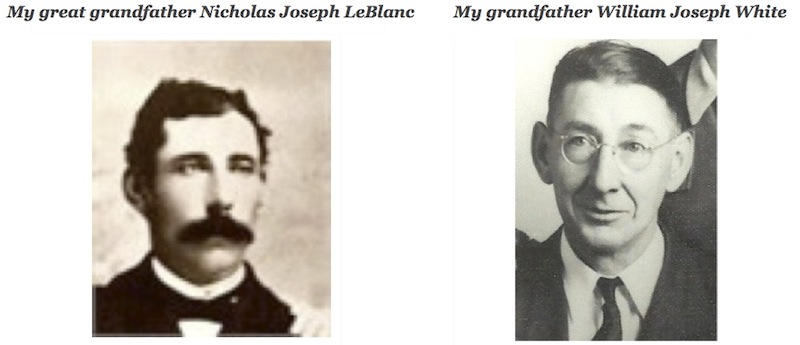
I knew my grandparents lived in Tucson, Arizona and had for many years. I tried to contact them with no success, but I did learn that my grandfather William Joseph White (LeBlanc) had passed away less than a year earlier on Sept 14th, 1966. Luckily for me, I found I had a great uncle who was a bishop in the Mormon Church, and he was more than willing to share information with me as my biological grandmother in Tucson would not answer my letters. She and my grandfather had eloped in Alamosa, Colorado just prior to his being called away to WWI.
He was a part of the PFC 59th Infantry 4th Division in World War I (the 59th Infantry, organized in 1917 by transfer of men from the 4th Infantry, saw hard fighting as a part of the 4th Division in Champaign in the Aisne-Marne engagement in Lorraine at St. Mihiel and at the Meuse-Argonne. In the Aisne-Marne offensive the regiment did gallant service against the Chateau-de-Diable north of the Vesle River). He was an American of French-Canadian descent and spoke fluent French and was being sent to the front lines. After he left, her father learned of the marriage and had it annulled. Then they found out she was expecting a child.
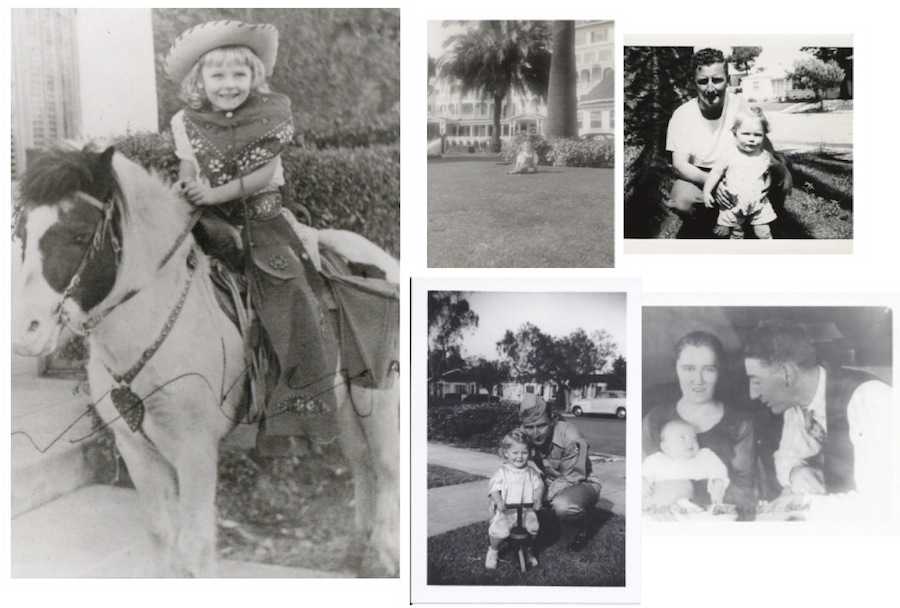 My grandmother was friends with one of the Nichols’ girls who told their mother about the unwanted baby boy. The family adopted my father as their fourth child (and I might say favorite child!) When my grandfather came home after one year, he and my grandmother Leah May Hebble were married again on 3 Dec 1919. He then went out to the Nichols’ farm and demanded his firstborn son back, and my grandfather R. P. Nichols drove him off the property with a shotgun.
My grandmother was friends with one of the Nichols’ girls who told their mother about the unwanted baby boy. The family adopted my father as their fourth child (and I might say favorite child!) When my grandfather came home after one year, he and my grandmother Leah May Hebble were married again on 3 Dec 1919. He then went out to the Nichols’ farm and demanded his firstborn son back, and my grandfather R. P. Nichols drove him off the property with a shotgun.
The adoption had not yet been finalized. It took place in court in Alamosa, Colorado on 15th December 1919. They were heartbroken to have lost their firstborn, and they went on to have another beautiful baby boy, who unfortunately died of baby food poisoning in 1921 at the age of 5 months, 25 days; they then had a daughter in 1924 and another son in 1933.
The daughter who was my biological aunt, of course, actually wrote me a letter sometime in the late 1960s threatening to sue me for stating that her parents were the parents of my father. After her death, in Tucson in 1997, her only child, my cousin found among her important papers, my father’s original birth certificate with her parents names on it. Actually when my Dad went into the Army during WWII from Coronado, the Department of Commerce had to issue him a birth certificate with his birth name, William Hebble White and his date of birth 16 Sept 1918 even though his name was legally Richard Virgil Nichols. I cannot imagine that nowadays a baby could be adopted out with the court records saying “abandoned at birth” when the father was unaware of the birth and overseas at war.
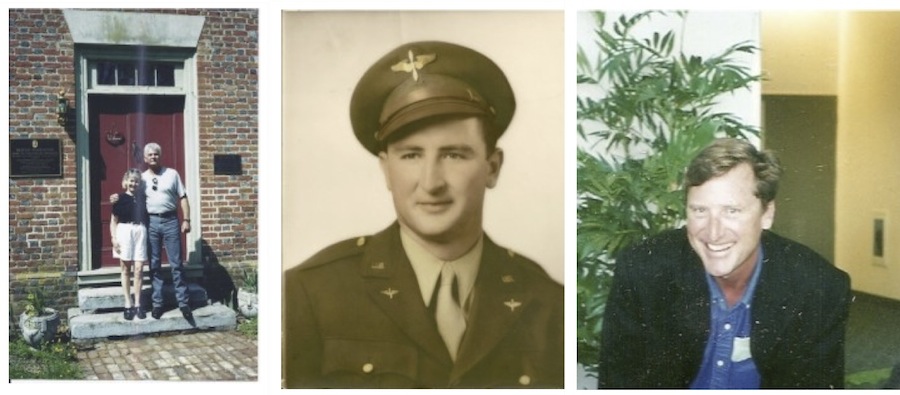 Things have changed a bit in the past 92 years. My father never met his parents, siblings or nephew. His mother actually outlived him by three years when she passed away in 1979. I submitted my brother Nick’s Y-DNA in 2008, and he connects to seven LeBlanc’s with 67 markers, all from the same ancestor Daniel LeBlanc of France and Canada
Things have changed a bit in the past 92 years. My father never met his parents, siblings or nephew. His mother actually outlived him by three years when she passed away in 1979. I submitted my brother Nick’s Y-DNA in 2008, and he connects to seven LeBlanc’s with 67 markers, all from the same ancestor Daniel LeBlanc of France and Canada
Take some time to look over your own family tree and consider what you are looking for from a test. Do you want to prove or disprove a family legend? Family Tree DNA has the largest DNA database in the world for genetic genealogy. As of April 02, 2011, the Family Tree DNA database has 329,073 records.
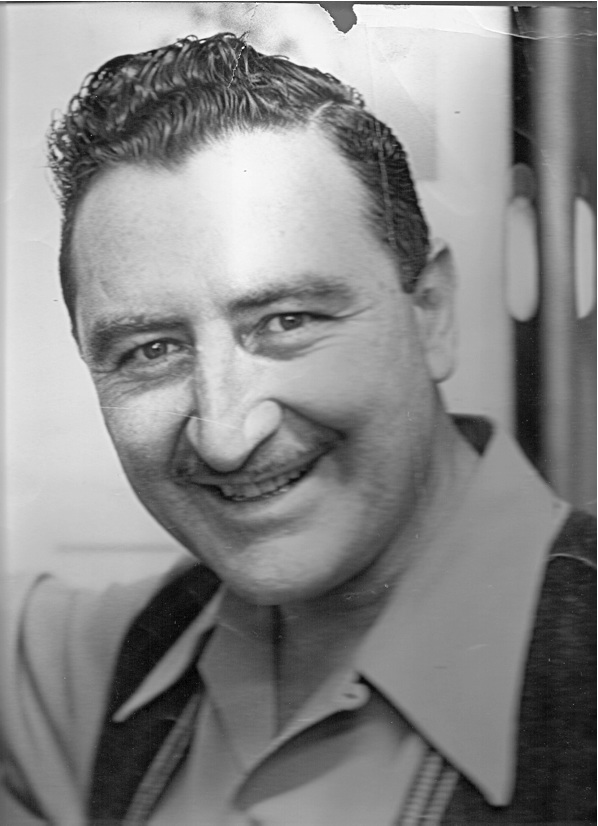
Some facts about inferred DNA: Y-chromosome DNA only gets transmitted along the direct paternal line (from father to son). The parts of the chromosome that are tested for genealogy usually do not change from one generation to the next. If they do change, it is usually only by one count on just one of the markers. Therefore it is possible to infer the test results from someone who has taken a DNA test to all of that person’s paternal line relations for several generations back. 90 percent of genealogists choose Family Tree DNA – with the largest DNA database. As of January 21, 2012, we have a total of 357,160 records!
My very favorite DNA is a story about an Englishman who finds out he is a Yank! This happened 63 years ago during WWII. A retired Englishman learns his father was an American soldier from Louisville, Kentucky. After a lifetime, a Briton is shocked to learn he’s a Yank!
By Byron Crawford • bcrawford@courier-journal.com • May 25, 2008:
A romantic tragedy of World War II linked across an ocean by a single strand of DNA is still unfolding in Kentucky this week. On his deathbed a few years ago, the man Peter Vickery had always believed his father disclosed that Peter was not his son — Peter’s real biological father was an American soldier. “I felt a bit numb,” said Vickery, now 63, a retired truck driver who lives in Birmingham, England.
His 88-year-old mother, who is a patient in a nursing home in England with her mind weakened by a stroke, would later admit to Vickery’s younger sisters that, yes, she’d had a brief fling with an American soldier in February 1944 while her husband was serving with British forces in North Africa. She had given birth to Peter, the GI’s son, in October 1944. She could no longer remember the soldier’s last name only that his first name was Robert, and he was over 6 feet tall and in his early 30s. She had never heard from him again after their passionate, fleeting affair in London. “They had met as part of a foursome, but I don’t know with whom, and they had gone out dancing,” said Vickery. “I heard that from my sisters. I found it embarrassing to talk with my mother about it.” His mother’s heartbroken parents had sent her away from their home in Cardiff to live with an older stepsister in Birmingham after learning that she was pregnant. For a while after her husband returned from the war, she had pretended that Peter was her sister’s baby, but the truth finally surfaced. Although she and her husband remained married for many years, and even had three other children, they divorced later in life. “I was kind of glad, really, when I found out that he wasn’t my father because we hadn’t gotten along that well most of my life,” said Vickery.
In January 2008, Vickery sent a DNA sample to the web site: Ancestry.com, hoping that he might miraculously find some link to his real father. About the same time, Rick McCubbin, of Bardstown, Kentucky — an avid genealogist who is the U.S. Marshal for the Western District of Kentucky — entered his DNA sample on the same site hoping to locate McCubbin relatives in Scotland. When notified about their matching DNA a few weeks later, Vickery and McCubbin began exchanging e-mails.
Vickery shared his story with McCubbin and provided his mother’s information about a soldier named Robert, who had passed through England in February 1944. “Ten minutes later, I get another e-mail back from Rick,” said Vickery. “I nearly fell out of my chair.” McCubbin wrote that his great uncle Robert, who was well over 6 feet, had been in England in early 1944 when he was 32. He had been among the U.S. 29th Infantry Division troops who stormed Omaha Beach on D-Day. He survived the landing but died in battle several weeks later. He was never married. Could Rick McCubbin’s great-uncle have been Peter Vickery’s father? Despite the DNA and matching descriptions, McCubbin, who had been a Louisville police officer before he was named U.S. Marshal , continued to look for evidence carefully cross-checking the dates on military records and letters.
He sent Vickery the last picture his family had made of Robert Elvis McCubbin dressed in his Army uniform about 1943, and Vickery showed it to his mother. “Yes,” she was sure the soldier in the picture was Peter’s father. “Her face lit up,” Vickery said. “She asked if I would leave the picture with her. She touched my face and said, “He was a lovely man.” Peter Vickery, who is married but has no children, arrived in Kentucky on Tuesday to meet “an extra family” he never knew existed. “I really couldn’t afford to come, but when I found out he (Robert) had two sisters alive, I thought I’d better get over here and meet some of these people,” he said. As fate would have it, Rick McCubbin, the family historian, has kept all of his great-uncle’s personal effects all these years — the flag from his coffin, his Purple Heart medal, the letters he wrote home, and his wallet containing $1 and some phone numbers, which had been found with his body on the battlefield. Late last week, McCubbin, Vickery, McCubbin’s son, Aaron, Rick’s brother, Mike, and their father, Ron, visited the old family graveyard in Hart County and the home on East Kentucky Street in Louisville where Vickery’s father lived before the war.
Tomorrow, Rick McCubbin, Vickery and other members of the family will visit the burial site of Robert Elvis McCubbin in Louisville’s Evergreen Cemetery, where for the first time in 63 lost Memorial Days, Peter Vickery will finally place a flag on his father’s grave. “That’s probably going to get to me,” said Vickery. “When your life suddenly changes direction at this time in your life, it’s kind of difficult. I’ve been an Englishman for a long time now, and now I’m newly American.” Note: What amazed me about this story was the photo that accompanied it, Vickery, the Englishman, and the McCubbin men looked like brothers, the genes were so strong!
A Success Story Submitted by Jim Miller
My father was born Carl Rhoads Jr. in Texas and never met or even knew his father’s name until he was an adult. His mother was in another relationship when he was an infant and called my father James Miller after that man. Her history with men wasn’t very good and my father never had a father in his life. Unfortunately he passed away in 2007, never even certain whether Carl Rhoads who may have been his father really was based on his mother’s lifestyle. After my dad passed, I read a story in AARP and then saw a TV story about DNA testing and decided this would be the way to give my dad a history even if a little too late to do him any good. I turned up an exact genetic match at 37 markers 0 distance to another Rhoads. He had a family tree with only one Carl Rhoads in the tree born in Oklahoma but raised in Texas where my father was born. More research resulted in a great family tree which included a large number of famous relatives. My father never had much of a family, and I know he always regretted not having any roots. I started my search to honor my dad and have a feeling he rests a little more at peace now that he has roots.
I am amazed myself at the capabilities in DNA matching, and just last fall Family Tree DNA in Houston, Texas provided conclusive proof through their Family Finder test that two NFL players are half-siblings. Until just a few months ago, Xavier Omon, of the San Francisco 49ers & Ogemdi Nwagbuoof the San Diego Chargers, did not even have a clue that the other existed. In early August at the request of ESPN, the Family Tree DNA lab preformed the test and the result was unequivocal definitely half-siblings. This story can be found on the ESPN website under a “Brother’s Tale”.
A brothers’ tale for Omon & Nwagbuo: They plan to meet for the first time Thursday when the 49ers play at San Diego In a few days, the NFL will make its final purge, casting away pieces that don’t fit. Xavier Omon, a fourth-string running back for the San Francisco 49ers, might be on one of those lists, and it won’t be a stunning revelation for a man who has been cut three times. In life, like in football, Omon has struggled to fit in. He was one of just three African-American kids at Beatrice High School in southeastern Nebraska, and freshman year, he says he was called the N-word. “Honestly,” he said, “I beat the hell out of the kid. It never happened again. His father called once, when Xavier was in fourth or fifth grade, and promised to visit. Omon says he never heard from him again. So for nearly 26 years, Xavier Omon felt as if he had half of a life. Then a message came that changed everything. Afraid at first.. It started, of all places, on Facebook. Delorise Omon, Xavier’s mom, was catching up with an old acquaintance on the computer last winter. The man informed her that Chris Nwagbuo, Xavier’s biological father, had died in 2004, and that one of his sons — a half-brother of Xavier’s that he’d never met — just happened to play football, too. For the San Diego Chargers.
“It was crazy,” Xavier Omon said. “It’s like a movie.” Ogemdi Nwagbuo and Xavier Omon found out in December that they are half-brothers. It should have jolted him from his chair, prompted him to rush to his smartphone to check the Chargers’ roster. But Omon hesitated. He was scared. If he took that step, there was no turning back. He’d have to call Ogemdi Nwagbuo, but what if he rejected him? Or didn’t believe him? After pacing for 20 minutes, Omon decided he had nothing to lose. He clicked on the website and found the face and name. Ogemdi Nwagbuo, defensive end, 6-foot-4, 312 pounds. Born in 1985 just like Omon. He then needed roughly five friends to persuade him to make the call. Omon says receiver-turned-reality-TV star Terrell Owens was one of those supporters who helped him muster up the courage to hit the send button. And thus began a nine-month relationship via texts, Skype and late-night phone conversations. Ogemdi Nwagbuo and Xavier Omon found out how much they were alike, how their first love was basketball, not football, how their paths to the NFL were unconventionally jagged, how both of them are waiting out this final cut, though Nwagbuo is seemingly a lock to spend his fourth straight season with the Chargers.
Genetic Genealogy allows us to trace the path of our ancestors and find out who they were, where they lived, and how they have migrated throughout the world. Find the race of your ancestors by discovering your haplogroup. Were they European, and if so, which haplogroup did they belong to? Do you have a Native American Ancestry? What about African ancestry? Do you belong to the famous Jewish Cohanim line? Were you related to Niall of the Nine Hostages? Find out these interesting facts and many more. A surname project allows people from all over the world with the same or similar surname to use DNA markers to determine the roots of their surname and reunite family groups. By comparing your haploytype to other males, you can begin piecing together the puzzle of your global family network.
Because your haploytpe is passed down to you from your ancient forefathers, all males who share the same lineage as you, even if it is very distant, will have the same haplotype as yourself. Using this powerful information, you can determine whether a family line with your same surname shares a common ancestor with you (same family line as yourself) and which family groups originated from a different line. It is always important to try to have the oldest male members of your family line tested as soon as possible to capture important information before it becomes too late. DNA testing has become a very powerful tool for individuals to discover their past and is becoming one of the fastest growing hobbies in North America and Europe. Individuals around the world now have this hobby at their fingertips. A mother passes on her mitochondrial DNA (mtDNA) to both her daughters and sons. Only daughters have the ability to pass it on to the next generation though. This means that both men and women can take the mtDNA test. You will then match both men and women.
I hope that I have inspired you to look into your family genealogy and the advances made the last few years through Y-DNA for males and mtDNA for females. Who knows you may discover your ties to royalty and legendary figures here! Many famous figures of the past, including royalty, have had their DNA analyzed, and now you can see how you are related to these figures.
Don’t know where to start? Want to join a lineage society such as the Colonial Dames or Daughters of the American Revolution and you need help with your society application, than I may be able to help you! Every genealogy project is unique, and my objective is to assist people pursue genealogical research. While no genealogical researcher can guarantee results, your best hope for finding the traces of your ancestors’ footprints may rest with an experienced researcher. If you want to contact me for further information, please feel free to do as by email: hewick1@yahoo.com or 619-694-9415.


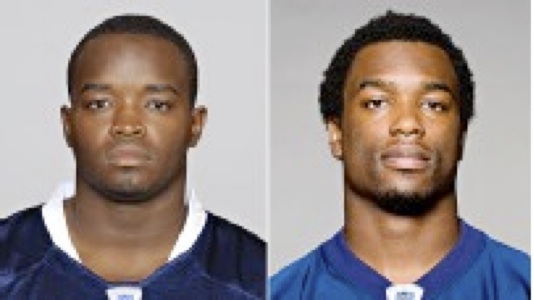
2 Responses to GENEAOLOGY